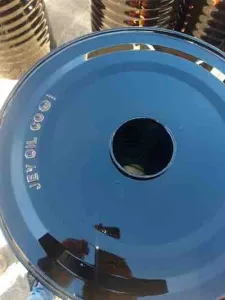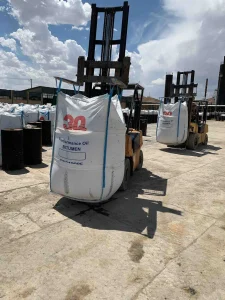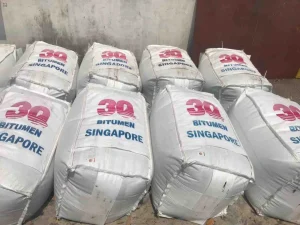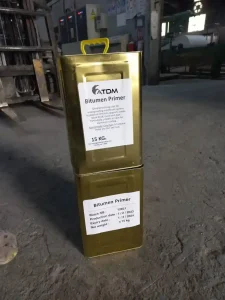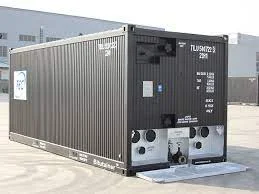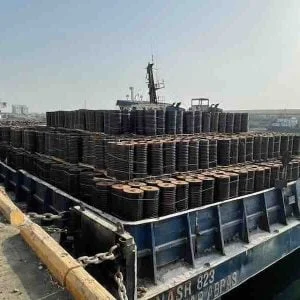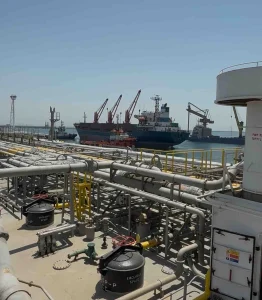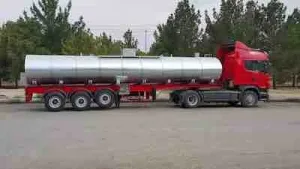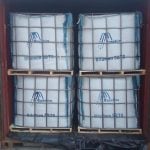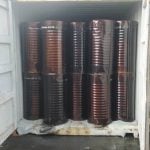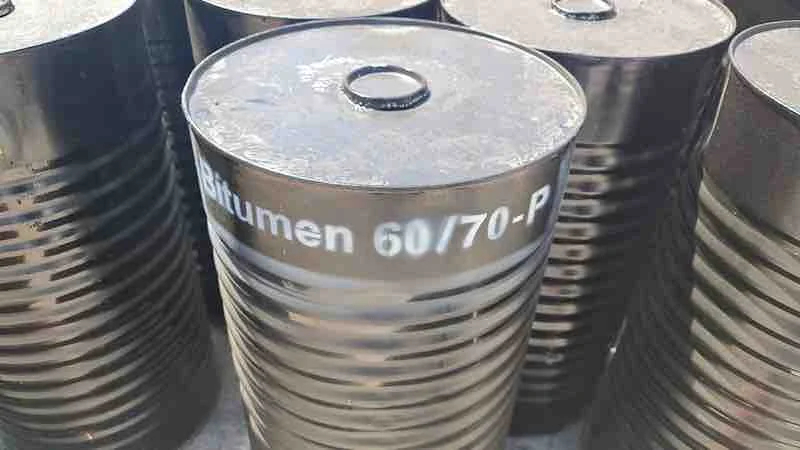
Bitumen 60/70 is a vital material widely used in road construction and infrastructure projects and known for its excellent adhesive properties, this grade of bitumen binds the base layers with aggregates, creating a strong, flexible, and long-lasting pavement surface.
Differences of 60/70 and bitumen 80/100
Bitumen grade 60/70 has a penetration value between 60 and 70 (0.1 mm), while bitumen grade 80/100 has a penetration value between 80 and 100 (0.1 mm). In Addition the softening point of 60/70 bitumen ranges from 48°C to 52°C, whereas the softening point of 80/100 bitumen ranges from 42°C to 48°C.
Usage of bitumen 60/70
Road Construction
Bitumen serves as a widely used binder in road and highway construction. As a result, it enhances surface durability and overall strength.
Asphalt Mixtures
Bitumen plays a key role in hot mix asphalt (HMA). Therefore, contractors use it for surfacing roads, parking lots, and other paved areas to ensure strength and longevity.
Roofing
Bitumen also contributes to roofing materials such as asphalt shingles and membrane sheets. Therefore, it provides effective waterproof protection.
Waterproofing
Ideal for waterproofing foundations, basements, and other structures due to its water-resistant properties.
Pavement Sealants
Contractors frequently apply bitumen in pavement sealants and coatings. As a result, it significantly boosts the durability and extends the lifespan of paved surfaces.
Industrial Applications
Industries commonly use bitumen for corrosion protection in pipes, tanks, and various coatings. Consequently, this ensures longer equipment life and improves overall performance.
Why do Bitumen 60/70 prices vary between suppliers?
Generally Bitumen 60/70 quality varies, which impacts price. It is also the base material for other bitumen grades, such as PMB and emulsions.
Public refineries deliver the highest-quality bitumen and, as a result, usually charge premium prices. In comparison, private refineries come next in quality and cost, while packing factories offer the lowest prices.
Moreover, production methods significantly impact the final cost. For example, some suppliers rely on pure vacuum bottom (VB), which increases expenses but ensures superior quality. Others blend VB with vacuum resin (VR), or use only cheap VR, which does not fully meet standard specifications then lower quality and cheaper prices.
Embossed bitumen means
Embossed Drums and Quality Differences
Top public refineries emboss their drums to show that they fill the bitumen directly at the refinery. As a result, they ensure product quality while protecting their brand reputation.
Private refineries can also produce good quality bitumen, but the results depend on the use of vacuum bottom (VB). This can lead to variations in product performance, including differences in key properties like viscosity at 60°C and 130°C.
How to Buy High-Quality Bitumen 60/70
To ensure you are buying high-quality Bitumen 60/70, several checks are recommended:
Penetration Value: Confirm it falls within the standard range (60/70).
Odor: A mild odor usually signals low sulfur content. However, some suppliers add sulfur to increase the product’s weight; as a result, the overall quality decreases.
Viscosity: Check that viscosity is within the correct range. Using vacuum resin (VR) instead of vacuum bottom (VB) reduces quality.
Spot Test: Should be negative. A positive result may indicate that the bitumen was overheated or burned during production.
Choosing a Bitumen Factory
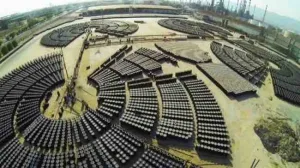
Types of Bitumen Factories
There are four main types of bitumen production factories, each offering different quality levels and costs:
Continuous Production: Produces the highest quality bitumen but at a higher cost.
Batching with Hot Oil Circulation: Quality is good but may fail the TFOT (Thin Film Oven Test).
Batching with Direct Heating: Risk of burning and molecular changes, which can lower quality.
Blending Type: Blending-type bitumen often presents issues with viscosity. As a result, its high wax content makes it less suitable for asphalt applications.
Best size and packing of bitumen for multimodal transport
Steel drums 150Kg, 180Kg, 200Kg and 2 tons drum
We offer various types of bitumen packing, including drums 150 kg, 180 kg, 200/210 kg and recently in 2000Kg (2 tons) drum. benefit of 2 tons drum is easy handling and less labor cost and time at destination for melting.
Jumbo bags (300 kg, 380 kg, 1000 kg)
In 20ft container 24MT of 300Kg and 20MT of 1 ton jumbo bag stuffing also in 40ft container we can stuff up to 28.8MT depend on destination road authorities and limits.
Metal tin cans
Up to 26MT we can stuff in 20foot containers without pallet.
Bitutainers (22 MT)
Depend on CST plat of bitutainer approx 22 to 25MT filling.
Bulk vessels (1500 MT to 70000 MT)
Based on vessel capacity we are accepting bulk vessel if customer arrange his own vessel to our port and per hour 300MT can fill into.
Truck tankers (22 to 26 MT with heating elements)
There are several types of bitumen tanker trucks available. For example, some come with a dual-layer design, which helps retain heat for a longer period. In contrast, others have a single-layer structure; as a result, they lose heat more quickly.
We Deliver Bitumen 60/70 to Your Project Site
Choosing the right Bitumen 60/70 plays a vital role in ensuring the performance and durability of any construction project. To make the process easier, we also provide door-to-door delivery. If you order in drums or jumbo bags, we also provide a bitumen melter for on-site use which you can return after use.
Key Properties of Bitumen 60/70
Next, viscosity typically ranges between 1600 and 2400; lower wax content leads to better asphalt performance.
Moreover, specific gravity falls between 1.01 and 1.06 at 25°C, reflecting the material’s density and compactness.
Finally, the fire point (flash point) should reach at least 220°C, which plays a critical role in ensuring safety and fire resistance.
Bitumen Pricing
Prices fluctuate depending on several key factors. First, the cost of vacuum bottom (VB) plays a major role. In addition, crude oil prices (HSFO) significantly influence market rates. Finally, changes in the USD to local currency exchange rates directly impact overall pricing.
Shell Brand Quality
Shell Bitumen stands out due to its advanced technology, strict quality control, and strong industry collaboration. Therefore, it consistently delivers reliable and high-performance products.
Typical Data Sheet for Bitumen 60/70
| Property | Typical Value | Unit / Condition |
|---|---|---|
| Specific Gravity | 1.01 – 1.06 | @ 25°C |
| Penetration | 60 – 70 | dmm @ 25°C (Standard Needle) |
| Softening Point | 48 – 52 | °C (Ring & Ball Method) |
| Ductility | ≥ 100 | cm @ 25°C |
| Loss on Heating | ≤ 0.2 | % (Weight Loss) |
| Drop in Penetration After Heating | ≤ 20 | % Reduction |
| Flash Point | ≥ 250 | °C (Open Cup Method) |
| Solubility in Carbon Disulfide (CS2) | ≥ 99.5 | % |
| Spot Test | Negative | — |
Bitumen 60/70 and 80/100 differ
Mainly in their penetration values and softening points.
Bitumen 60/70 has a penetration range of 60 to 70 (0.1 mm) and a softening point between 48°C to 52°C, making it harder and more heat-resistant.
Bitumen 80/100 has a higher penetration value of 80 to 100 (0.1 mm) and a lower softening point of 42°C to 48°C, making it softer and more flexible.
In short, 60/70 is preferred in hot climates and heavy traffic conditions, while 80/100 is more suitable for colder regions where flexibility is essential.
The softening point of Bitumen 60/70 typically ranges between 48°C and 52°C.
This indicates the temperature at which the bitumen starts to soften and flow. A higher softening point ensures better performance in hot climates by preventing deformation under high temperatures.
Bitumen 60/70 is ideal for tropical and hot climates due to its higher softening point and lower penetration value.
It performs well in countries with high ambient temperatures, intense sunlight, and heavy vehicle loads—such as the Middle East, Africa, Southeast Asia, and Southern regions of Europe.
In contrast, Bitumen 80/100 is more appropriate for cold or moderate climates where increased flexibility is required to prevent cracking during temperature drops.
